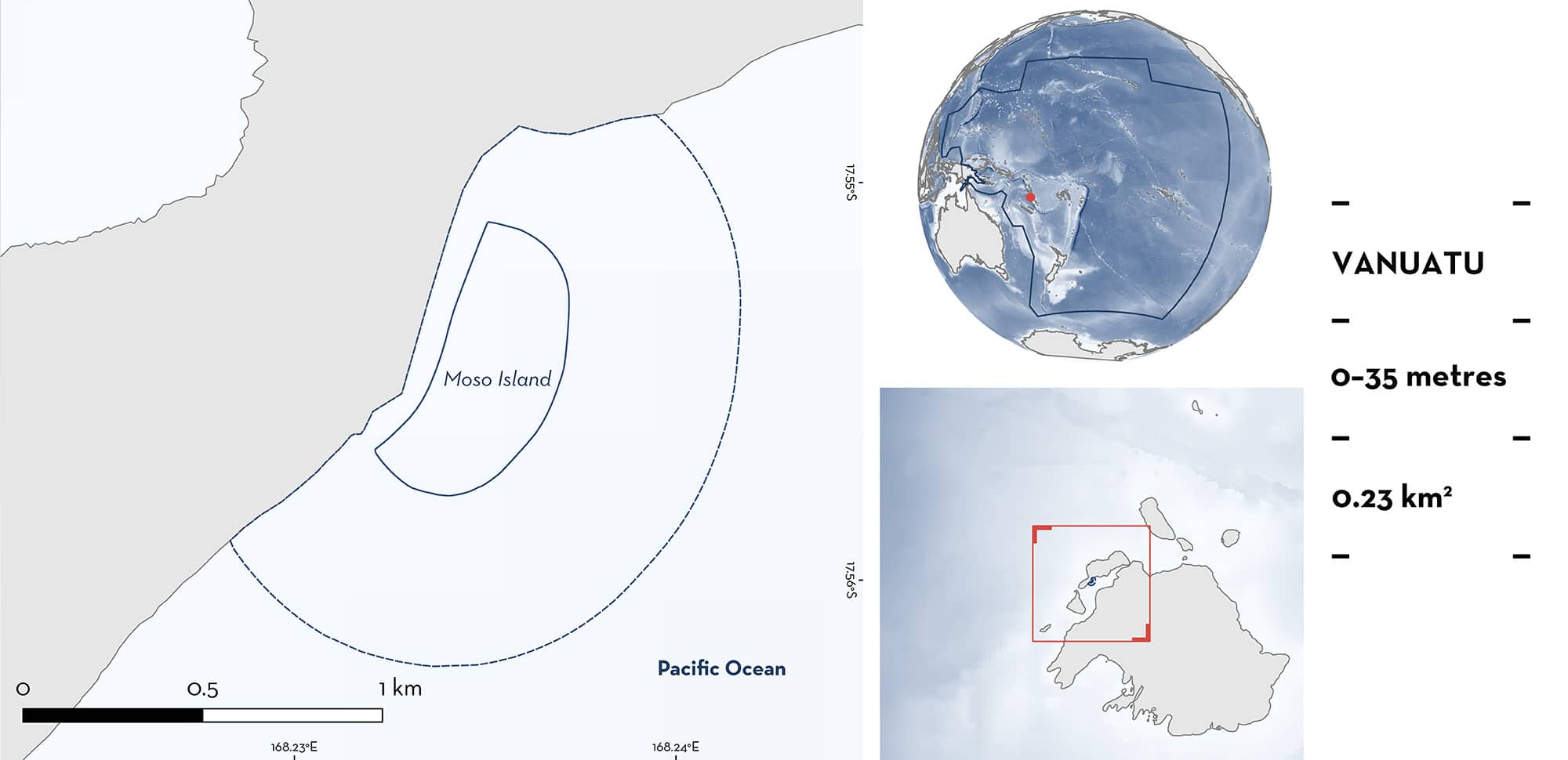ISRA FACTSHEETS
ISRA FACTSHEETS
NEW ZEALAND & PACIFIC ISLANDS REGION
Moso Island
Summary
Moso Island is located off the island of Efate in the Republic of Vanuatu. The area is situated in Havana Harbour, a sheltered stretch of water which separates Moso Island from the island of Efate. The climate in Vanuatu is characterised by high rainfall and high temperatures throughout the year, and experiences severe tropical cyclones during the austral summer months (December–February). The habitat of Moso Island is comprised of coral reefs and bommies. Within this area there are: threatened species and undefined aggregations (Spinetail Devil Ray Mobula mobular).
Download factsheet
Moso Island
DESCRIPTION OF HABITAT
Moso Island is located off the island of Efate in the Republic of Vanuatu. The area is situated in Havana Harbour, a sheltered stretch of water which separates Moso Island from the island of Efate. The climate in Vanuatu is characterised by high rainfall and high temperatures throughout the year, and experiences severe tropical cyclones during the summer months of December–February (Walshe et al. 2017). The area runs parallel to the beach on the southern side of Moso Island, and starts from ~10 m depth extending down the slope to ~35 m depth (M Burbeary pers. obs. 2024). Moso Island is characterised by coral reefs and bommies which host cleaner fish.
This Important Shark and Ray Area is benthic and pelagic and is delineated from inshore and surface waters (0 m) to 35 m based on the bathymetry of the area.
CRITERION A
VULNERABILITY
One Qualifying Species considered threatened with extinction according to the IUCN Red List of Threatened Species regularly occurs in the area. This is the Endangered Spinetail Devil Ray (Marshall et al. 2022).
CRITERION C
SUB-CRITERION C5 – UNDEFINED AGGREGATIONS
Moso Island is an important area for undefined aggregations of one ray species.
Spinetail Devil Rays have been observed regularly and predictably using this area as a cleaning station. The occurrence of these aggregations is supported by local ecological knowledge from recreational divers regularly visiting the area. Between June 2020 and April 2021, ~70 dives were conducted in the area (every ~2 weeks year-round), and Spinetail Devil Rays were observed cleaning on every dive (M Burbeary pers. obs. 2024). Divers recorded aggregations of 10–15 individuals on average, but >30 individuals have been observed on occasion. Aggregations of Spinetail Devil Rays have been observed year-round indicating no seasonality in the importance of the area (M Burbeary pers. obs. 2024). Mobulid rays are known to aggregate for a range of reasons, including attending cleaning stations (Palacios et al. 2023). Between 2022–2024, the dive operator has been going less frequently to the area, however, still report predictably encountering Spinetail Devil Rays (O Drew pers. comm. 2024). Moso Island is an important area for Spinetail Devil Rays as it is the only location in Vanuatu where the species is regularly and predictably reported.
Download factsheet
SUBMIT A REQUEST
ISRA SPATIAL LAYER REQUEST
To make a request to download the ISRA Layer in either a GIS compatible Shapefile (.shp) or Google Earth compatible Keyhole Markup Language Zipped file (.kmz) please complete the following form. We will review your request and send the download details to you. We will endeavor to send you the requested files as soon as we can. However, please note that this is not an automated process, and before requests are responded to, they undergo internal review and authorization. As such, requests normally take 5–10 working days to process.
Should you have questions about the data or process, please do not hesitate to contact us.


